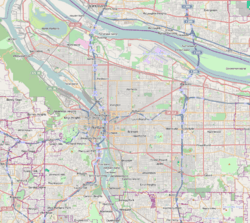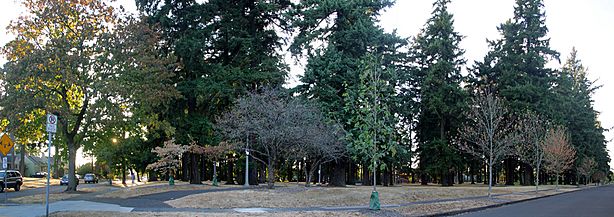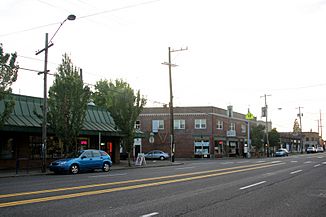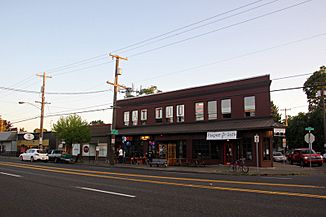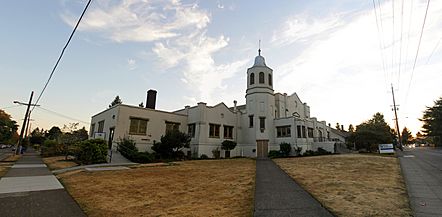Mt. Scott-Arleta facts for kids
Quick facts for kids
Mt. Scott-Arleta
|
|
|---|---|
|
Neighborhood
|
|
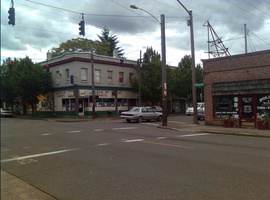 |
|
| Country | United States |
| State | Oregon |
| City | Portland |
| Area | |
| • Total | 0.86 sq mi (2.24 km2) |
| Population
(2010)
|
|
| • Total | 7,397 |
| • Density | 8,553/sq mi (3,302/km2) |
| Housing | |
| • No. of households | 3,222 |
| • Occupancy rate | 96% occupied |
| • Owner-occupied | 1,840 households (57%) |
| • Renting | 1,249 households (39%) |
| • Avg. household size | 2.30 persons |
The Mt. Scott-Arleta neighborhood is a cool place in Portland, Oregon. You can find it in the southeast part of the city. It's surrounded by other neighborhoods like Woodstock and Lents.
This neighborhood is home to Arleta School, which teaches kids from kindergarten to 8th grade. It also has Mt. Scott Park, a great spot with the Mt. Scott Community Center inside.
Contents
A Look Back: History of Mt. Scott-Arleta
How the Neighborhood Began
When Portland became a city in 1851, many settlers used an old Native American trail. This trail was a northern part of the famous Oregon Trail. It helped farmers bring their goods to market.
This road was named after Philip Foster. He owned a well-known farm and trading post nearby. Another important road was SE 82nd Avenue. It connected travelers from the Columbia River to places like Oregon City.
The spot where SE Foster Road and SE 82nd Avenue met became very important. It linked to Powell Valley Road, which went straight to downtown Portland. A big part of what is now Mt. Scott-Arleta was first owned by Issac Williams. He claimed the land in 1855. He moved there with his family from Pennsylvania. Other large landowners included Daniel Little and Ypsilanti Smith.
Growing with Trolleys and New Homes
Around the year 1900, a trolley line called the Mt. Scott line started running. It connected downtown Portland to the town of Lents. This trolley line went right through the future neighborhood. It traveled along SE Foster Road, then south on SE 72nd Avenue, and east on SE Woodstock Boulevard.
The trolley line was named after the nearby mountain. This is how the neighborhood got part of its name! Trolleys were very popular in the early 1900s. They helped Portland and its suburbs grow quickly.
In 1903, a company created the Arleta Park subdivision. They named it after the daughter of one of the owners. This subdivision gave the neighborhood the other part of its name. But Arleta Park is just a small piece of the whole neighborhood. Many other areas were also developed. These included Chicago, Kenwood Park, and Upton Park. Many German immigrants moved into these new homes.
Fun and Community Life
Life in the Mt. Scott-Arleta neighborhood often centers around Mt. Scott Park. The park is home to the Mt. Scott Community Center. This center was first built in 1927. Back then, it was a wooden bathhouse for an outdoor pool.
Today, the Community Center is much bigger. In 2000, they added an awesome aquatic center. It's a great place for swimming and other activities.
Gallery


